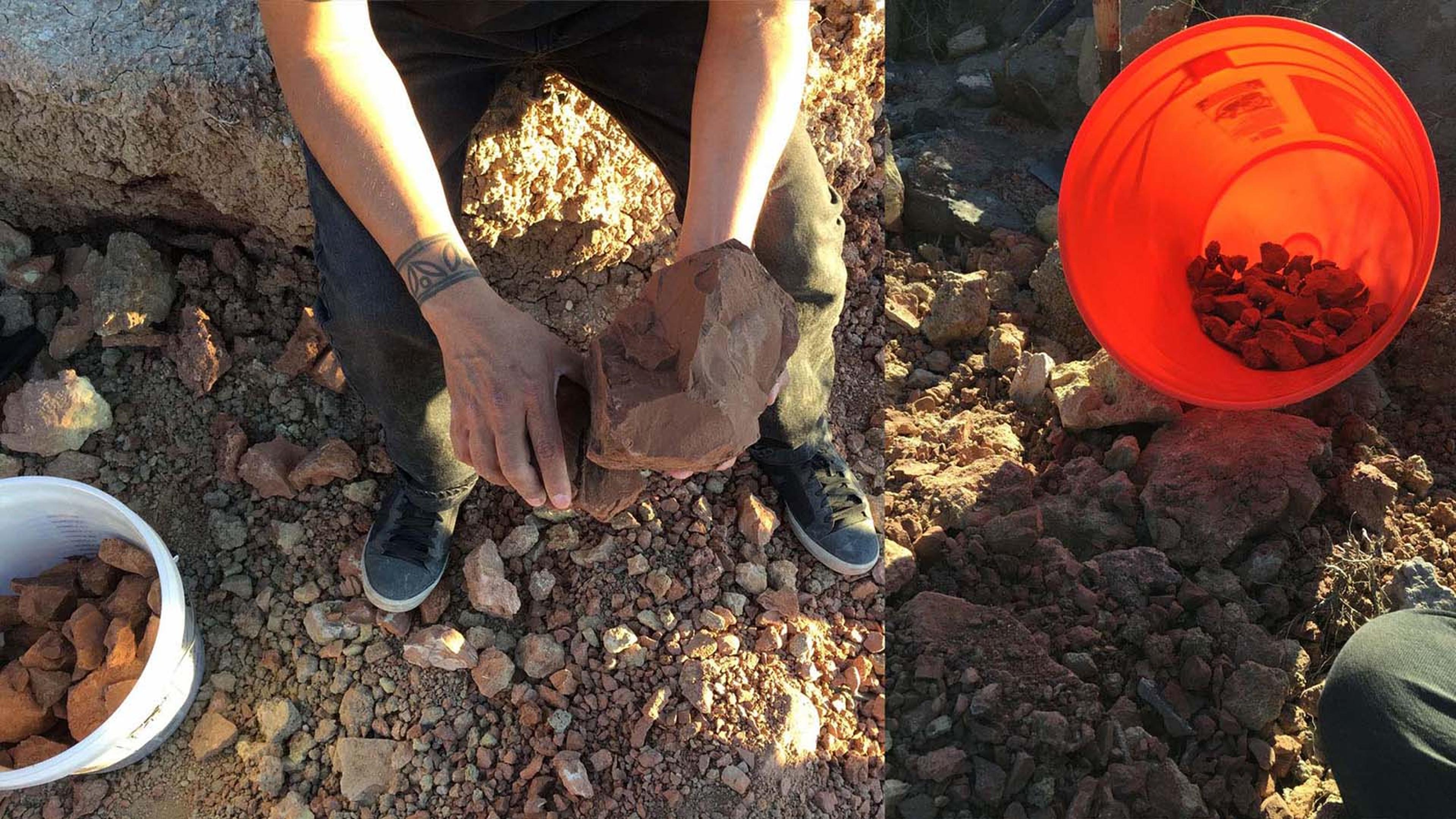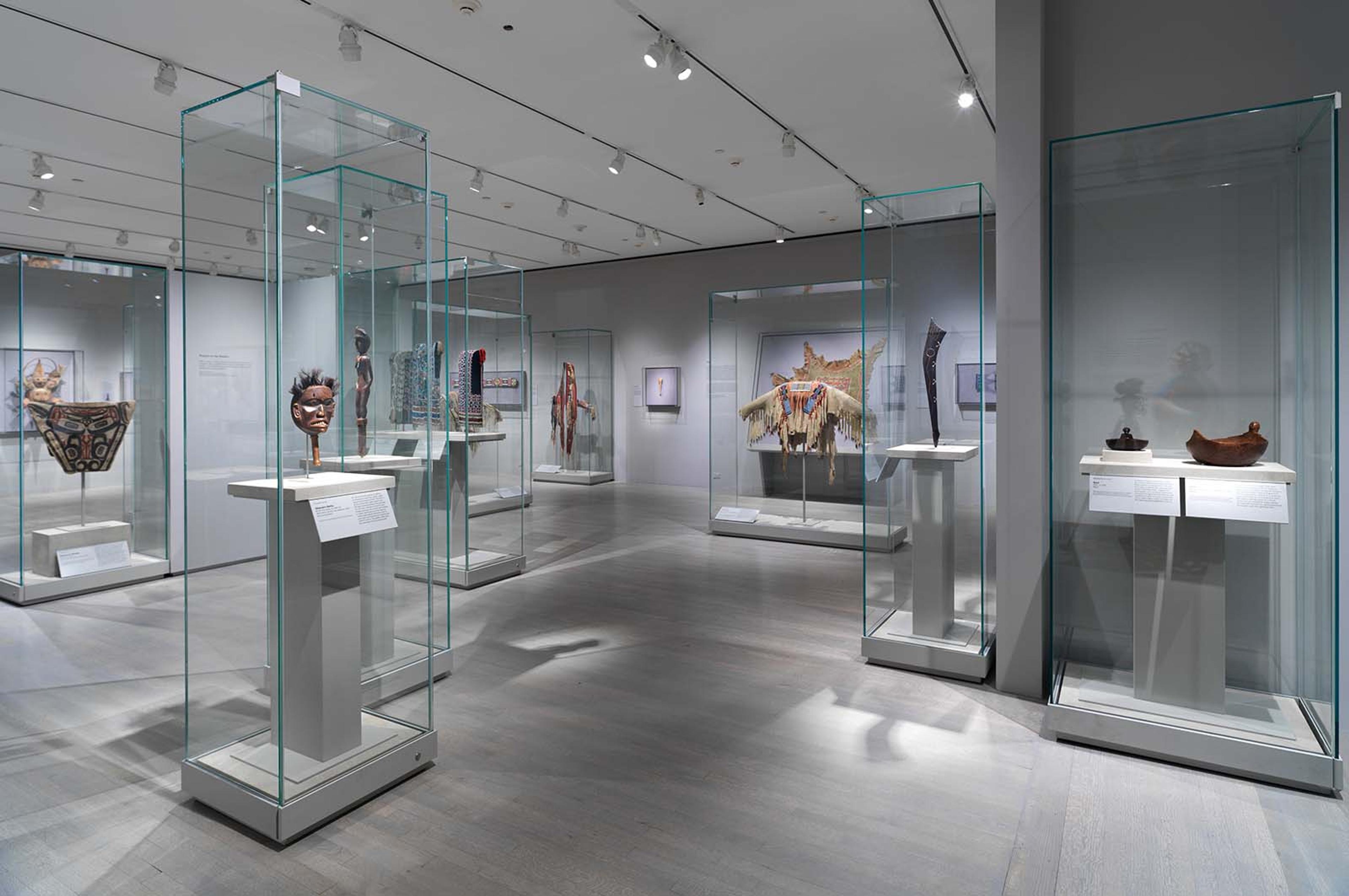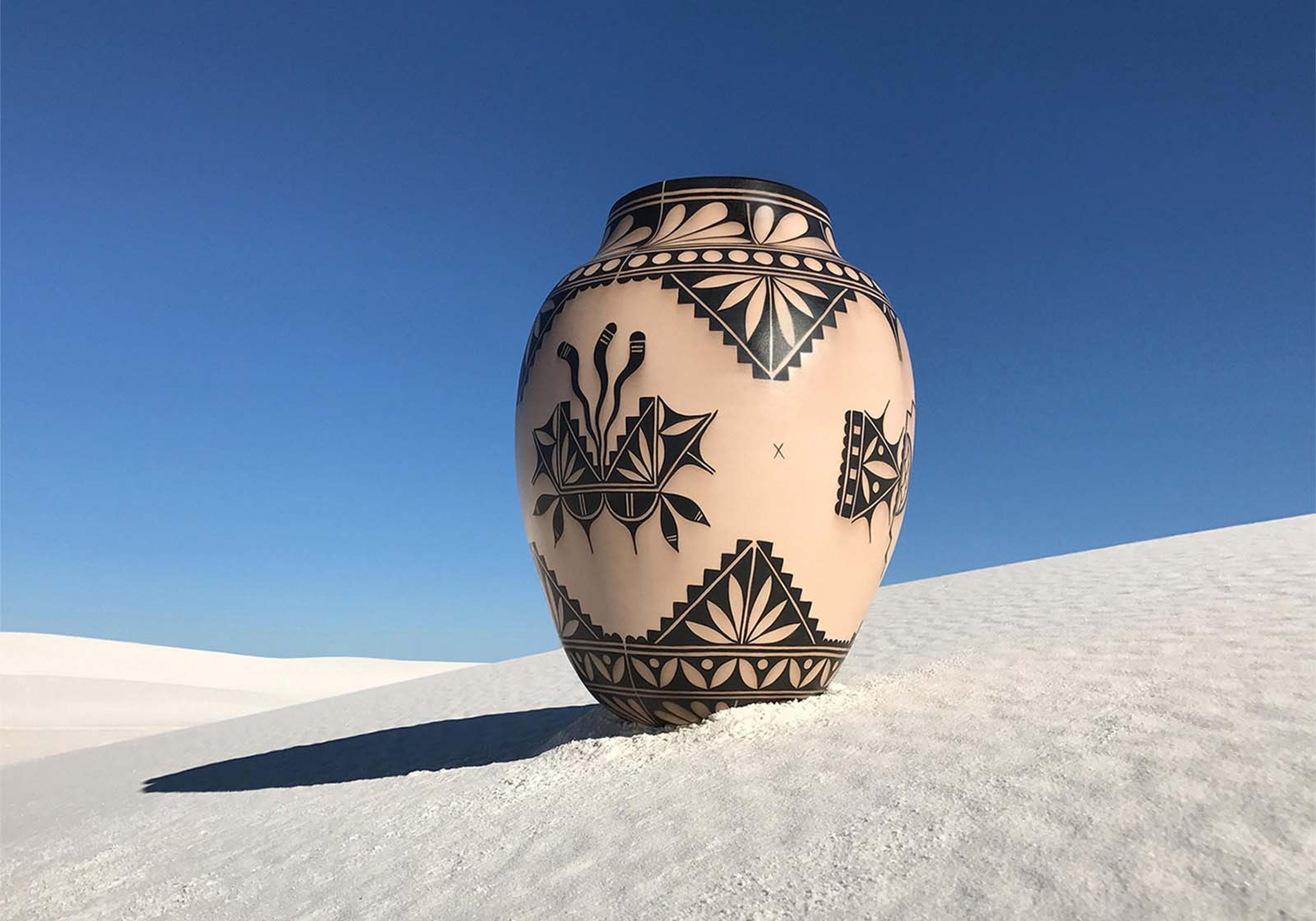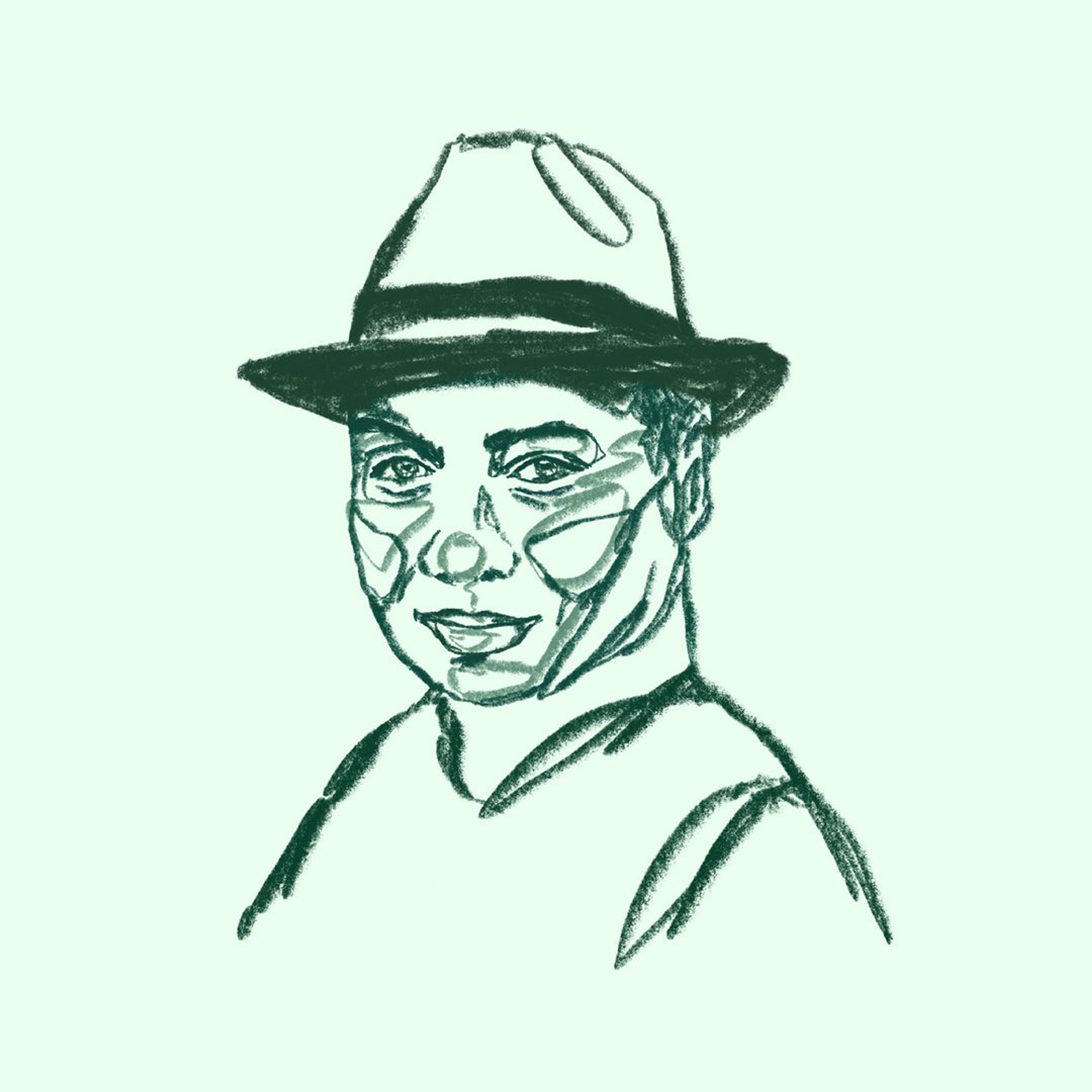Can art save your life? According to Virgil Ortiz, an artist from the Cochiti Pueblo in New Mexico, it can. For Virgil, making pottery with traditional materials and methods is a kind of therapy, a fundamental expression of his culture across generations. Virgil describes how the process itself brings him a sense of purpose and connection to his family, including the prayers he recites before he and his nephews dig clay from their ancestral lands. Given this living legacy, it was a significant moment for Virgil to see his culture represented at The Met in the Charles and Valerie Diker Collection of Native American art. Tune in to hear his story about art’s connection to belonging.
Listen to the podcast
Art Rooted in the Earth
Subscribe to Frame of Mind wherever you listen to podcasts:
Listen on Apple Podcasts Listen on Spotify Listen on Amazon Music
Transcript
Virgil Ortiz:
Using art as therapy, you know, art saved my life and kept me out of trouble, kept me on the right path. Then I was able to really connect with not only the spirits, and prayers, and the teachings of our grandmother, and our mother, and our dad. That’s one of my points now, it’s like, to try to pass that whole tradition to the next generation and make it fun.
Barron B. Bass:
Welcome to Frame of Mind, a podcast from The Metropolitan Museum of Art, about how art connects with wellness in our everyday lives. How can art uplift our heritage and identity? How do its rituals connect us to ancestors and community? The artist Virgil Ortiz sees Cochiti pottery as a kind of timeline of his indigenous culture.
It’s been etched and painted onto the surface of clay for generations. Every year, his family works together on the long and arduous process of making this pottery in New Mexico. And it’s that labor craft and history that Virgil finally sees represented in museum galleries.
A few years ago, Virgil went to The Met for the first time and visited the Charles and Valerie Diker collection of Native American art, where he saw his culture’s past, present, and future embodied in clay. This week, you’ll hear from Virgil about that experience and how art sustains his sense of meaning and purpose.
Virgil Ortiz:
I am from Cochiti Pueblo in New Mexico. Pueblos are communities of indigenous people. Cochiti is located between Santa Fe and Albuquerque. It used to be one of the largest Pueblos back in the day, just because it was centrally located. And now it’s one of the smallest ones. Cochiti Pueblo has maybe like, I would say close to 3000 members, but people that do live there are maybe around 5 to 600 people.
My siblings and I grew up with art always around us, and we were born into a family of potters on our mother Separina Ortiz’s side of the family. So our grandmothers, great-grandmothers, all worked in clay. I’m the youngest of six kids in our family, and as soon as like all my siblings started to take off to go to school and to move out of the house, I was there with our parents to learn how to create the pottery that people do here at Cochiti. Using the traditional methods and materials, meaning that we go dig our own clay, we collect all the wild spinach to make the paint.
Once every year, like when the weather’s nice outside, right, and it’s warm, we always go to the same clay vein and we definitely need horsepower, which are my nephews. So we have to park our vehicles at the bottom of the mountain and walk up to the clay vein. And we dig clay all day. It comes out of the earth and it’s still damp and it looks like dark chocolate.
Our clay is naturally red but once you get to the pure clay, we start digging it out, carrying them down in five-gallon buckets back to the truck, pack it up, come back home. We have to put those in a storage in our barn outside and let it completely dry out. Bone dry. And then, we take pieces out, we crack them up to quarter inch sizes of clay chunks and then we slowly start adding them to a plastic bin and layering them with water, crushing it up, layering it with water, keep going and going.

Images of Virgil collecting the clay. Courtesy of Virgil Ortiz
Once we have the ball of clay ready to go, then we start sculpting and we use the coil and scrape method, meaning, like we do just coils and build up the piece, whether it’s a figure pottery or a pot.
And then we sandpaper it down and make it as smooth as we can. And then we take some water and put a light coating of water over the whole thing to remove any of the dust on it. And if it’s large enough to fit in your normal household stove appliance, right, we heat it up to 350 (degrees F) and it’s kind of like baking oatmeal cookies. But, it’s just funny. That’s one of the jokes that I always tell my students.
Growing up as a kid, one of our family friends, and he is a collector and he sold Pueblo pottery, he knew me when I was like six years old and he would come to the pueblos for buying trips. And he had always wondered, you know, how it was going to last, how the connection was gonna be made to the next generation to keep making these pottery works? So he was asking my parents like, where’s this kid learning all these different types of styles that he’s making?
They just said, “He’s experimenting on those. That was his style.” He had invited us to his showroom in Albuquerque. When we walked in, our eyes were so huge, and our mouths dropped because it was the largest collection of historic Cochiti figurative pottery. And all of my pieces that I had been experimenting on looked exactly identical to these pieces without seeing them before.
So my parents pulled me out of the showroom. And they had told me that, “We see like how the connection is made right now, like the clay is speaking through you.” So that was kind of like a, I don’t know what it was like, reincarnation or something, but it was just like a massive sign for me that I knew at that age what I was going to do for the rest of my life.
Then we have to rag polish it. So once you rag polish it, you can not touch it with your hands, no matter how clean you think they are. You’re always going to have like oils from your hand. So when you’re painting and you accidentally touch it with something, you’ll see a fingerprint after you fire it, it’ll show up. You won’t know you touched it until after it’s fired.
It’s kind of funny to have younger nieces and nephews, and they know they’re not supposed to be around the pots when we get to this point. And once you fire it, you see like these little tiny fingerprints that are left on the pot. You know, when I went to go make a sandwich or something, like “Ah I told you not to touch it,” but it’s a way of everybody learning and being around each other. So that’s, you know, it’s welcome. And it’s like a little blessing, to see a little fingerprint on it, a smudge.
So it usually will take me about 45 days to paint the whole piece. What we are mainly painting with is black paint, but that’s another whole process and it takes another year or two to make our black paint and we make our black paint out of wild spinach. When the wild spinach starts to bloom, it’s purple flowers—it’s kind of like an alarm clock for us to go pick it. And then it’s ready to harvest.
If it’s my whole family all together, we usually get about eight 33-gallon-sized garbage bags full of just the leaves only. So we get that and bring it back home and we have these really huge boiling pots filled with water. We start boiling all the spinach leaves for like about three days, continuously boiling.

Left: Image of leaves used for paint. Right: Image of the leaves being boiled. Courtesy of Virgil Ortiz
And then it starts to disintegrate, basically. So we gather all of the spinach leaves with a cotton rag, strain it out, twist it. It starts to boil and thicken up a little bit more. So we lay a bunch of corn heads down and we start drizzling the paint on it, and that’s how we store it and we dry it. So, maybe around the six-month mark, you can pick it up and it’s kind of like taffy—the texture of taffy. So maybe at 11 months or the [one] year mark, then you’re able to just crack it like a, say a Jolly Rancher. When we’re going to paint a piece, we crack a piece of the wild spinach off, crush it up and rehydrate it—and that’s how we decorate the black paint.
I’ve never been to The Met before. We went there and I was blown away by the size of it and just everything that was in it just like completely, you know, you could have knocked me over with a finger.

View of Gallery 746, Art of Native America: The Charles and Valerie Diker Collection.
Then I met the curators and people that welcomed us to check out the Diker collection that they were just installing. It was really awesome, first of all, to see it in the main Met building. I automatically connect to them and like, you know, say a prayer and remember the people that did make these pieces. That’s what they’re made for: to speak for us and be represented in a huge museum like The Met, you know, that’s an honor the same way and to just be there and be a part of it and be able to tell our story.
That’s most important to me. And I know that was important to our family. Our mother and father making sure exactly people understand what they were about. And now for our family and people at the Pueblo to do the same thing, using the same methods and materials, then that means we go dig our own clay, make our own paint, do everything as they did back in, who knows how long. And you know, now the world still knows that we’re thriving and creating pieces such as our ancestors did.
Cancer took both our parents and one of our sisters. And building artwork and clay allows me to talk about hard subjects like that. That’s a way for me to be able to reconnect with them and hear their voices again and make me think about all our conversations that we had and their teachings, and try to remember as much as I can so that I can share it with my nieces and nephews or my sisters, my family in general, but also share it with the public.
Once we have all that made and then we decorate the whole piece and it’s ready to fire, we usually wait ‘til the morning time, when the winds are calm. It just has to be calm because it’s easier to control the fire. So, we get up early. I usually have my nephews here to help, like to fire bigger pieces and we fire one piece at a time ‘cause it’s easier to control.
So, at that point, it’s probably about two hours of a huge fire going. And you’re just praying on the side that you don’t hear any cracks or thuds or any explosions, right? Because after about three weeks of work, if you hear that, then boom, your piece has gone.
It’s kind of sad, but it always happens, and that’s why it’s sadly a dying art form at Cochiti. Because of the hard work that it takes, the amount of time. You know, it’s like they work eight hours a day and then they have no time to go gather all the materials and use the methods of traditional pottery making.

Image of pottery artwork made by Virgil Ortiz. Courtesy of Virgil Ortiz
Once you rag polish it, then you can see all the colors of how the paint has changed from like maybe green or brown, it just depends on what the color of the wild spinach paint looks like. So, there, you have your piece.
Each piece that I make, I put a prayer with them while I’m making it, of course, to help me be successful at making this piece—not blow up. Right? And then also just to acknowledge all of our ancestors that have done this before us and how they pass the whole tradition onto us. And that’s the only way I would feel successful in the future—is that when I move on to the next world, that I made my connection to the next generation.
Barron B. Bass:
Thank you for listening. This has been Frame of Mind, an art and wellness podcast from The Met. To find out more about Virgil and the artworks mentioned in this episode, please visit The Met’s website at www.metmuseum.org/frameofmind, where you’ll find bonus articles, features, resources, and videos on the endless connection between art and wellness.
Frame of Mind is produced by The Metropolitan Museum of Art and Goat Rodeo. At The Met: Head of Content Sofie Andersen, Executive Producer Nina Diamond, Associate Producer Bryan Martin, and Production Coordinators Harrison Furey and Lela Jenkins. At Goat Rodeo: Rebecca Seidel is Lead Producer. Megan Nadolski is Executive Producer. Production Assistance from Char Dreyer, Isabelle Kerby-McGowan, Cara Shillenn, and Max Johnston.
Senior producer is Ian Enright. Story Editing from Morgan Springer. Series Illustration by Sophie Schultz. I’m your host, Barron B. Bass. A special thanks to our guest on this episode, Reena Esmail. This podcast is made possible by Bloomberg Philanthropies and Dasha Zhukova Niarchos. If you liked this episode, please leave us a rating or review and share it with your friends.
Next time on Frame of Mind...
Grace Calame-Mars:
I remember a sculpture called Seated Couple, and you didn’t really realize how much detail was in it until you tried to draw it—that it made you think about what is it that I’m not really focusing on in my patient that I might be missing just by looking at it on the surface?
